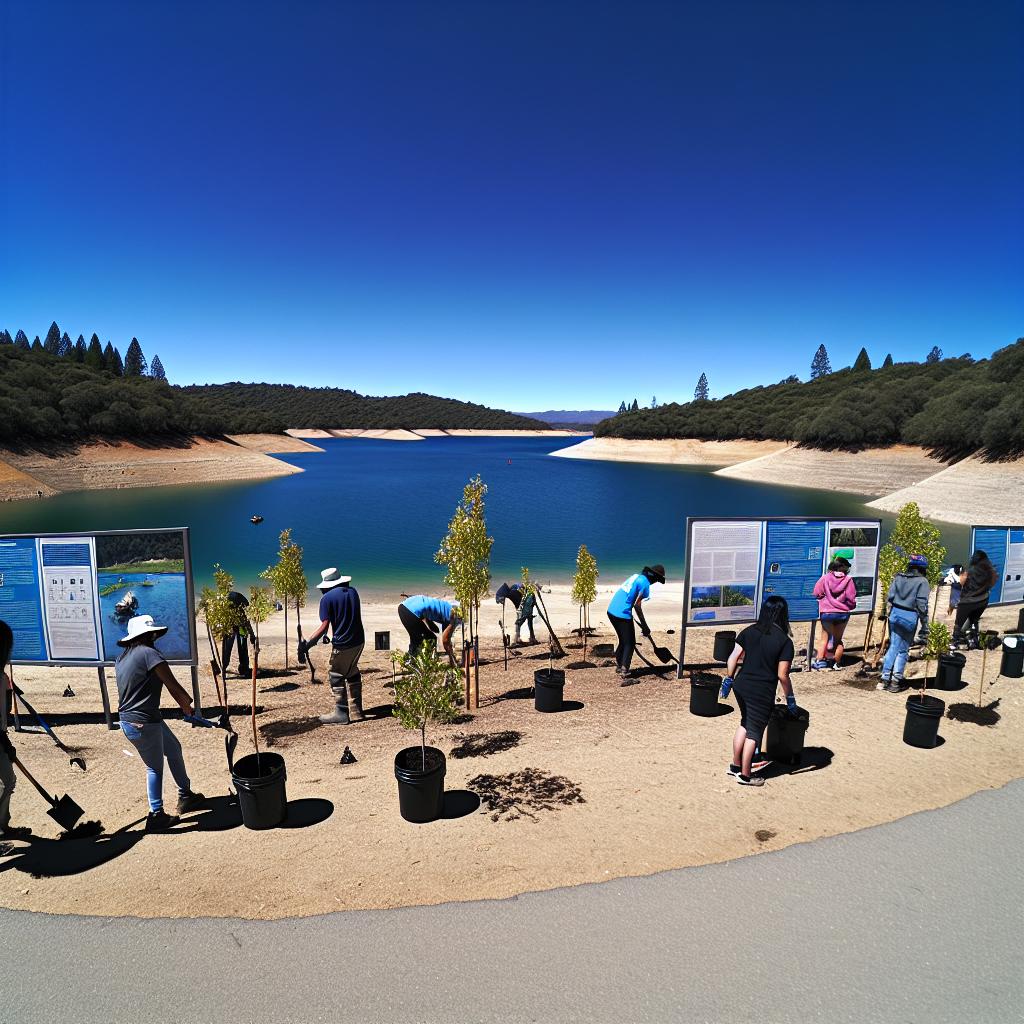Introduction to Lake Conservation Organizations
Lakes, often described as the Earth’s freshwater reservoirs, are vital ecosystems that support a diverse array of species. They serve numerous roles, offering habitats to aquatic life, resources for agricultural and industrial use, and spaces for leisure activities. However, the health of these ecosystems is under persistent threat from pollution, invasive species, and climate change. Lake conservation organizations strive to safeguard these natural resources, ensuring their ecological integrity is maintained or improved. By addressing the various factors impacting these bodies of water, such organizations make substantial contributions towards achieving ecological balance.
Key Focus Areas of Lake Conservation Organizations
The primary objective of lake conservation organizations is to address the multifaceted challenges facing lakes. To achieve this, they focus on several core activities designed to mitigate environmental threats. The strategies they employ can broadly be divided into ecological initiatives, educational programs, and policy advocacy.
Ecological Initiatives
Ecological initiatives form the backbone of lake conservation efforts. One of the central components is monitoring water quality to identify and address pollution sources. Regular testing and assessment are essential in pinpointing pollution, which could originate from agricultural runoff, untreated sewage, or industrial discharges. Armed with precise data, organizations can implement targeted interventions to reduce contaminant levels.
Another critical aspect of ecological work involves managing invasive species. These foreign organisms can outcompete native species for resources, thereby disrupting the balance of lake ecosystems. Efforts are made not only to control but also to eradicate these invasive populations. In conjunction, habitat restoration projects aim to rehabilitate areas that have been degraded by human activity or natural events. These initiatives ensure that the natural habitat is restored, supporting the biodiversity within lake ecosystems.
Educational Programs
Education plays a vital role in fostering an understanding of the importance of lakes and the need for their conservation. Many organizations conduct educational programs aimed at a broad audience that includes local communities, schools, and policymakers. By imparting knowledge and awareness, these programs encourage individuals and communities to adopt sustainable practices that benefit lake ecosystems. Through workshops, seminars, and informational campaigns, the public is educated on their responsibility towards environmental stewardship. Such initiatives also emphasize the importance of being proactive in conservation efforts, highlighting how collective action can lead to significant positive changes in preserving natural resources.
Policy Advocacy
Another critical component of conservation work involves influencing and shaping public policy. Organizations advocate for legislation and regulations that protect lakes from degradation. They actively collaborate with governmental bodies, policymakers, and other stakeholders to establish legal frameworks that support conservation goals. By promoting policies that emphasize sustainability and environmental protection, they ensure that the measures necessary for lake conservation are in place. The integration of these policies into governmental agendas serves to institutionalize conservation efforts and establish long-term strategies for ecological preservation.
Notable Organizations and Their Contributions
Numerous organizations stand out in the field of lake conservation, due to their extensive work and notable contributions at various scales, from local initiatives to international collaborations.
The Global Nature Fund
The Global Nature Fund is an international non-governmental organization dedicated to the conservation and protection of lakes and wetlands across the globe. It facilitates collaborative projects through the “Living Lakes” network, which connects partners worldwide, allowing for the exchange of knowledge and strategies. This network exemplifies effective international cooperation in tackling environmental challenges and implementing conservation strategies.
The Center for Lake Conservation
Operating in the region of the Great Lakes, the Center for Lake Conservation (CLC) is instrumental in research and advocacy. This organization aims to safeguard the Great Lakes by conducting comprehensive scientific studies. These studies form the basis for evidence-backed policy recommendations and conservation tactics. Active engagement with policymakers enables the CLC to drive legislative changes that bolster ecosystem protection efforts in this crucial region.
The Lake Champlain Basin Program
The Lake Champlain Basin Program focuses intently on maintaining the water quality of Lake Champlain, which spans areas in Vermont and New York. By fostering local partnerships, the organization is able to address specific issues affecting the lake, such as eutrophication and pollution. Collaboration with local stakeholders ensures that conservation activities are rooted in the context of regional needs and priorities, making them more effective and sustainable over time.
Challenges and Future Directions
Despite the determined efforts of conservation organizations, various challenges continue to pose serious threats to lake ecosystems. Climate change stands as a significant threat, altering weather patterns and water temperatures, which can devastate sensitive lake habitats. Meanwhile, increasing pollution from urban and agricultural sources contributes to water quality degradation, threatening both aquatic life and human health.
Future directions in lake conservation are likely to incorporate innovative technologies in tackling these issues. For instance, advanced water treatment techniques and monitoring technologies can play a crucial role in managing pollution levels. Additionally, artificial intelligence and data analytics could facilitate predictive modeling, offering insights into prospective environmental changes and informing proactive conservation strategies.
Enhancing community participation is another key focus. Active involvement of local populations can be pivotal in implementing and sustaining conservation projects. By fostering a strong sense of community stewardship, these organizations can ensure that conservation measures have localized support and are imbedded within the community ethos.
Moreover, international cooperation presents a vital opportunity for addressing global challenges. As many lakes transcend national boundaries, collaborative efforts can harmonize conservation strategies and amplify impact. Shared knowledge and technology, along with coordinated policy approaches, can effectively tackle cross-border environmental issues.
In conclusion, the mission of lake conservation organizations remains critical to preserving the ecological integrity of lake ecosystems. Through dedicated work across key areas such as ecology, education, and policy advocacy, they play a vital role in maintaining biodiversity and ensuring the sustainable use of water resources. Their ongoing efforts contribute to a better balance in ecosystems, supporting life and livelihoods for future generations.
